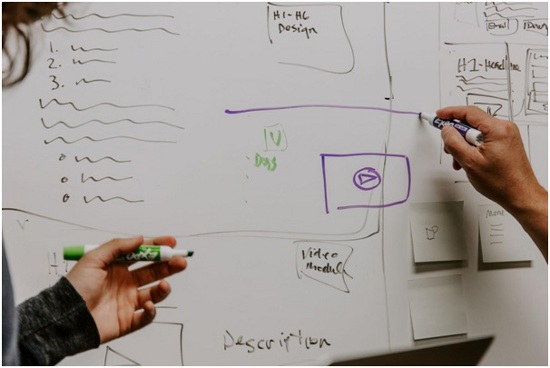Most people think of workflows and processes as the same thing, but they are actually quite different.
Workflows describe the steps that need to be followed in order to complete a task, while processes are a repeatable set of tasks that achieve a specific goal. In other words, workflows provide the instructions on how to do something, while processes ensure that everything is done the same way every time.

Here in this article, we have a complete scenario built to let you figure out the actual differences and similarities between workflows and processes. This understanding once observed closely can help you better operate business operations in the real world!
What are workflows and processes and what’s the difference between them?
Workflows:
Workflows are a series of steps that need to be followed in order to complete a task. They provide instructions on how to do something and are often customized for each individual task. This flexibility makes them useful for completing complex tasks, but also means that they are typically not followed exactly the same way every time.
Processes:
Processes, on the other hand, are a set of tasks that achieve a specific goal. They are essential for ensuring consistency across an organization because they must be followed exactly the same way every time. This makes them useful for any task, even ones that are relatively simple.
Workflows describe a series of steps that need to be followed in order to complete a task. Processes are a set of tasks that achieve a specific goal and must be followed exactly the same way every time.
The distinction is important because it means that workflows can be customized for each individual task, while processes must be followed exactly the same way every time. This flexibility is what makes workflows so useful for completing complex tasks, while processes are essential for ensuring consistency across an organization.
The benefits of using workflows
– Workflows can be customized for each individual task.
This flexibility is what makes workflows so useful for completing complex tasks, while processes are essential for ensuring consistency across an organization, more info about it here.
– You’ll feel more confident in your work.
You’ll feel more confident in your work because there is less chance for errors and confusion when you rely on instructions that are tailored to your specific task.
– You can learn workflows easily.
It’s easy to learn how to do something because you only need to know the steps involved in completing that task, not a series of complex rules that govern how that task must be completed.
– They make it easier to train new employees.
Workflows make it easier to train new employees because they will already be familiar with the steps required for completing each task. This means that your entire team can get up to speed more quickly and there’s less of a chance that someone will miss an important step.
– You’ll get to do what you’re best at every day.
This is perhaps the most important benefit of using workflows: you’ll get to do what you’re best at every day. When you’re able to use your skills and strengths to complete tasks, you’ll be more productive and happier with your work.
How to create a workflow?
There are a few steps you can take to create a workflow:
- Decide what the task is and what needs to be done in order to complete it. (This will help you to determine the steps involved in completing the task).
- List out the individual steps that need to be followed.
- Once you know what the steps are, you can list them out in order.
- Create a flowchart or diagram that illustrates the steps.
- A flowchart or diagram can help to clarify the steps involved in completing the task.
- Test the workflow to make sure it works.
Once you’ve created the workflow, test it to make sure it actually works. This means completing the task using the workflow, with someone else watching for mistakes or places where it could be simplified.
The benefits of using processes:
– Ensures consistency across an organization
Processes are essential for ensuring consistency across an organization because they must be followed exactly the same way every time. This makes them useful for any task, even ones that are relatively simple.
– Tasks can be repeatable
This means that you can use processes for tasks that need to be completed the same way every time. This is especially important for complex tasks, which can be difficult to complete if they are done manually each time. Having a process in place ensures that the task is done the same way every time, with minimal chances for errors.
– Provides a sense of order and control
Processes provide a sense of order and control in an organization. This is because they ensure that everything is done the same way every time, which eliminates confusion and errors. In addition, processes make it easier to train new employees, as they will be familiar with the steps involved in completing each task. Finally, using processes allows employees to focus on their strengths and skills, which leads to greater productivity and satisfaction.
– Provides a sense of order and control
Processes provide a sense of order and control in an organization by ensuring that tasks are completed in a consistent manner. This can be helpful for both simple and complex tasks, as it provides a set of instructions that everyone can follow. Additionally, processes help to ensure that tasks are completed efficiently and without errors.
How to create a process?
Following are some steps involved in creating a process:
- Decide what the task is and what needs to be done in order to complete it. This will help you determine the steps involved in completing the task.
- List out the individual steps that need to be followed, once you know what they are.
- Once you’ve listed them out, create a flowchart or diagram that illustrates each step of the process.
- Test your process by following it with someone else watching for mistakes or places where it could be simplified.
- Make any changes needed based on feedback from testing and ask other people for their opinion on how they might simplify it if possible- this can lead to faster, more efficient work!
Conclusion
Workflows and processes are two important aspects of any organization, yet they are often confused with one another. Workflows describe the steps that need to be followed in order to complete a task, while processes are a repeatable set of tasks that achieve a specific goal. In other words, workflows provide the instructions on how to do something, while processes ensure that everything is done the same way every time.
















